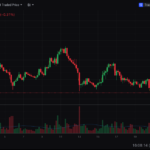Breakout trading is a popular and dynamic strategy that allows traders to capitalize on significant price movements when an asset’s price breaches key support or resistance levels. This method is rooted in identifying and riding the momentum that often follows these breakouts, making it an essential tool for traders aiming to profit from strong market moves.
What is Breakout Trading?
Breakout trading involves identifying points on a price chart where the asset is expected to break through resistance (upward movement) or support (downward movement). These levels act as barriers, and when the price “breaks out,” it often leads to substantial market momentum and volatility.
Key Components of a Breakout Strategy
- Identifying Breakout Zones:
- Resistance Level: The upper boundary where the price struggles to move higher.
- Support Level: The lower boundary where the price struggles to move lower.
- Chart patterns like triangles, rectangles, or flags often highlight potential breakout points.
- Volume Confirmation:
- A breakout with high trading volume is generally more reliable, signaling strong market participation.
- Entry Timing:
- Entering a trade immediately after the breakout is common. Others may wait for a pullback to the breakout level to confirm its validity.
- Stop Loss Placement:
- Placing stop-loss orders slightly below the breakout level (for upward breakouts) or above it (for downward breakouts) helps manage risk.
- Profit Targets:
- Use methods like measuring the height of the breakout pattern to set realistic profit targets.
Why Breakout Trading Works
Breakouts occur when there’s a shift in market dynamics, often driven by news, earnings reports, or economic data. These shifts lead to increased buying or selling pressure, propelling the price into new territory. Traders capitalize on the momentum created by market participants reacting to these changes.
Common Breakout Trading Strategies
- Classic Breakout:
- Trade the breakout immediately once the price crosses the resistance or support level.
- Retest Breakout:
- Wait for the price to return to the breakout level (the “retest”) and confirm it as new support or resistance before entering.
- Intraday Breakouts:
- Focus on smaller timeframes to capture breakouts during active trading sessions.
Challenges in Breakout Trading
- False Breakouts:
- Prices may momentarily breach a level only to reverse back, trapping traders. Volume analysis and confirmation signals can help mitigate this risk.
- High Volatility:
- Breakouts can lead to sharp price swings, requiring disciplined risk management.
- Market Context:
- Breakouts are more reliable in trending markets but can fail during choppy or sideways markets.
Tools and Indicators for Breakout Trading
- Moving Averages: Help identify trends and potential breakout points.
- Bollinger Bands: Indicate periods of low volatility that may precede breakouts.
- Relative Strength Index (RSI): Detect overbought or oversold conditions.
Example of a Breakout Trade
- Identify a stock consolidating between $50 and $60.
- Notice high trading volume as the price approaches $60.
- Price breaks above $60 with increased volume. Enter the trade.
- Place a stop-loss at $58 to manage risk.
- Set a profit target based on the breakout pattern, e.g., $70.
Conclusion
Breakout trading is a rewarding strategy for traders who can spot key price levels and act decisively. By combining technical analysis, risk management, and market awareness, traders can make the most of breakout opportunities.
Disclaimer: This article is for informational purposes only and does not constitute financial advice. Always consult a financial advisor before making investment decisions.







